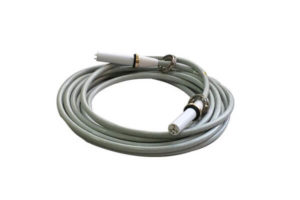The Role of Semiconductor Layer in High Voltage Cable
The so-called “shielding” in the high voltage cable structure is essentially a measure to improve the electric field distribution.
High voltage cable conductors are made up of several wires. Air gap is easily formed between high voltage cable conductor and insulating layer. The surface of conductor is not uniform, which will result in the concentration of electric field.
A shielding layer of semiconductor material is added on the surface of the conductor. The shielding layer is equipotential to the shielding conductor and has good contact with the insulating layer, thus avoiding partial discharge between the conductor and the insulating layer.

The shielding layer is an internal shielding layer. There may also be a gap between the insulating surface and the sheath, which may lead to partial discharge. Because of these factors, a shielding layer of semiconductor material is added on the surface of the insulating layer.
The shielding layer has good contact with the shielding insulating layer and is equipotential to the metal sheath, thus avoiding partial discharge between the insulating layer and the sheath.
The shielding layer is an external shielding layer, which is an extruded insulated cable without metal sheath except for the semiconductor shielding layer. In addition, a metal shielding layer wrapped with copper bars or wires should be added. This metal shielding layer acts as capacitive current in normal operation. When the system is short-circuit, it acts as the channel of short-circuit current and shielding electric field.
It can be seen that if there is no external semiconductor layer and copper shield in High voltage cable, the possibility of insulation breakdown between core and core of three-core cable is very high.





